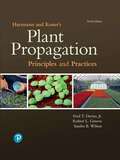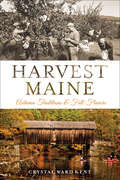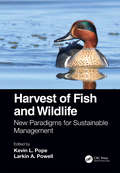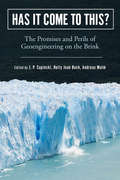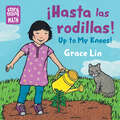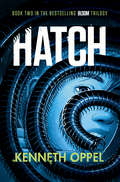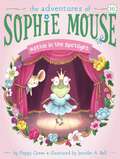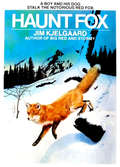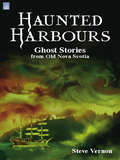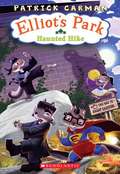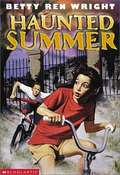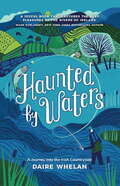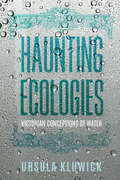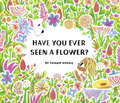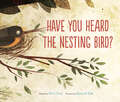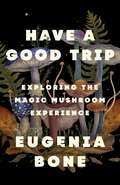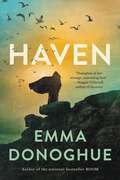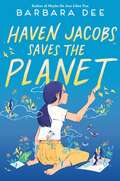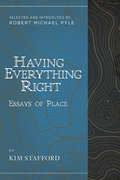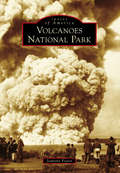- Table View
- List View
Hartmann and Kester's Plant Propagation: Principles and Practices
by Robert Geneve Sandra Wilson Hudson Hartmann Dale Kester Fred DaviesFor all undergraduate courses in plant propagation at the two-year and four-year colleges and universities. <p><p>The world standard for plant propagation and horticulture for over 50 years, Hartmann and Kester’s Plant Propagation continues to be the field’s most complete, up-to-date text on plant propagation. It now contains color figures throughout, promoting learning and making it an even more useful working text and reference. It also contains extensive updates reflecting the latest commercial techniques and understanding of propagation biology. Like previous editions, it is organized into paired chapters on principles and practices, so it can easily be adapted for teaching courses that cover only practical topics, and for courses that also cover conceptual issues.
Harvard Business Review: Dealing with Drought (HBR Case Study and Commentary)
by Alison Beard Forest L. ReinhardtFrom the November 2016 issue. A farmer debates whether to continue planting or lease his land. By Forest L. Reinhardt, and Alison Beard. Expert commentary by Kim Morison, and Ken LaGrande.
Harvest Maine: Autumn Traditions & Fall Flavors
by Crystal Ward KentExperience the fairs, feasts and foliage that herald harvest time in the Pine Tree State. Autumn traditions and flavors come alive in this nostalgic journey through New England's favorite season. Nature lore follows the ways of moose and bear and the great fall migrations of hawks and Monarch butterflies. Old-time fairs still feature horse-pulling, handcrafts and pie-baking contests. Apples, pumpkins and potatoes offer a delectable bounty for the table. Classic recipes for Indian pudding, apple pie, baked beans and brown bread round out this harvest-time sampler. Author Crystal Ward Kent serves up a slice of Maine at its finest.
Harvest of Fish and Wildlife: New Paradigms for Sustainable Management
by Kevin L. PopeHarvest of Fish and Wildlife: New Paradigms for Sustainable Management unites experts in wildlife and fishery sciences for an interdisciplinary overview of harvest management. This book presents unique insights for embracing the complete social-ecological system to ensure a sustainable future. It educates users on evolutionary and population dynamics; social and political influences; hunter and angler behavior; decision processes; impacts of regulations; and stakeholder involvement. Features: Written by twenty-four teams of leading scientists and managers. Promotes transparent justification for fishing and hunting regulations. Provides examples for integrating decision making into management. Emphasizes creativity in management by integrating art and science. This book appeals to population biologists, evolutionary biologists and social scientists. It is a key resource for on-the-ground managers and research scientists developing harvesting applications. As the book’s contributors explain: “Making decisions that are robust to uncertainty…is a paradigm shift with a lot of potential to improve outcomes for fish and wildlife populations.” –Andrew Tyre and Brigitte Tenhumberg “Temporal shifts in system states…must somehow be anticipated and dealt with to derive harvest policies that remain optimal in the long term.” –Michael Conroy “Proactive, effective management of sportspersons…will be essential in the new paradigm of harvest management.” –Matthew Gruntorad and Christopher Chizinski
Has It Come to This?: The Promises and Perils of Geoengineering on the Brink (Nature, Society, and Culture)
by Christian Parenti Richard York Jennie C. Stephens David Tyfield Laurence L. Delina Tina Sikka Nils Markusson Duncan McLaren Wim Carton Lili Fuhr Mads Dahl Gjefsen Ina Möller Anne Pasek Linda Schneider Kevin Surprise Kyle Powys WhyteGeoengineering is the deliberate and large-scale intervention in the Earth's climate system in an attempt to mitigate the adverse effects of global warming. Now that climate emergency is upon us, claims that geoengineering is inevitable are rapidly proliferating. How did we get into this situation where the most extreme path now seems a plausible development? Is it an accurate representation of where we are at? Who is this “we” who is talking? What options make it onto the table? Which are left out? Whom does geoengineering serve? Why is the ensemble of projects that goes by that name so salient, even though the community of researchers and advocates is remarkably small? These are some of the questions that the thinkers contributing to this volume are exploring from perspectives ranging from sociology and geography to ethics and Indigenous studies. The editors set out this diverse collection of voices not as a monolithic, unified take on geoengineering, but as a place where creative thinkers, students, and interested environmental and social justice advocates can explore nuanced ideas in more than 240 characters.
Hasta Las Rodillas / Up to My Knees (Storytelling Math)
by Grace LinNow in Spanish bilingual editions--Caldecott Honor winner Grace Lin celebrates math for every kid in this board book series.Mei explores measurement as she plants a sunflower seed and watches it grow. The plant starts off as tall as her toe, but soon it's up to her knees, then her waist, then her shoulders. How tall will it get? The Storytelling Math series shows that all children can be mathematical thinkers. Each book includes ideas for exploring math at home with your children, developed in collaboration with math experts at STEM education nonprofit TERC Inc., under a grant from the Heising-Simons Foundation.
Hatch: A Novel (The Bloom Trilogy #2)
by Kenneth OppelBook Two in the Bestselling Bloom Trilogy. First the rain brought seeds. Seeds that grew into alien plants that burrowed and strangled and fed. Seth, Anaya, and Petra are strangely immune to the plants’ toxins and found a way to combat them. But just as they have their first success, the rain begins again. This rain brings eggs. That hatch into insects. Not small insects. Bird-sized mosquitos that carry disease. Borer worms that can eat through the foundation of a house. Boat-sized water striders that carry away their prey. But our heroes aren’t able to help this time–they’ve been locked away in a government lab with other kids who are also immune. What is their secret? Could they be…part alien themselves? Whose side are they on? Kenneth Oppel expertly escalates the threats and ratchets up the tension in this can’t-read-it-fast-enough adventure with an alien twist. Readers will be gasping for the next book as soon as they turn the last page…
Hattie in the Spotlight (The Adventures of Sophie Mouse #16)
by Poppy GreenSophie&’s friend Hattie tries out for a play at Oak Hollow Theater in this sixteenth charming book of The Adventures of Sophie Mouse series!When Hattie Frog learns that Oak Hollow Theater is putting on a play and anyone can audition, she knows it&’s her time to shine. Sophie is surprised because Hattie is usually so shy! But she supports her friend and helps Hattie practice for her audition. And Hattie gets a role! There&’s just one problem. Now Hattie isn&’t so sure she&’s ready to be on stage in front of all of Pine Needle Grove! With easy-to-read language and illustrations on almost every page, the Adventures of Sophie Mouse chapter books are perfect for beginning readers.
Haunt Fox
by Jim KjelgaardTHE STIRRING SAGA OF HAUNT FOX-- THE BRAVEST, MOST CUNNING FOX OF THEM ALL. He was Star, a big handsome red fox, named for the starshaped white spot in the center of his chest. But his talent for eluding traps and dogs with ghostlike cunning earned him a new name--Haunt Fox. An outlaw who mercilessly raided poultry farms, he was stalked and shot at by every hunter and farmer in the valley. But no one wanted the legendary animal more than young Jack Crowley and his foxhound, . Thunder. Together, they set out on a blazing chase into the heart of the wilderness. It was a chase the brave outlaw fox would never forget.
Haunt of the Nightingale: A Garth Ryland Mystery (Garth Ryland Mystery #4)
by John R. RiggsAs Christmas approaches a string of footprints tracked in the season's first snow leads Garth Ryland to his own barn and a stranger armed with an ax she knows how to use--Garth can tell by her stance. Even though she doesn't answer his cautious questions, even though it's his barn, something in her bearing, something in her silence, something in her cornflower blue eyes lets him let her be. Shortly after the stranger's arrival Will Cripe and Paul Peters disappear and some folks around town take a different attitude toward the ax-armed blond. A few think she escaped from the prison up north. Others think she's Annie Lawson, come back for revenge. No one's seen Annie or her abusive husband since they both dropped out of sight seven years ago. If she can take care of one man, couldn't she take an ax to another? Garth doesn't believe the woman who haunts his barn, who can't speak, but can sing like a nightingale, would send a man to his grave, and he does what he can to protect her privacy. But Will Cripe, an aging, dying sage, Garth's boyhood mentor, manhood friend, and Paul Peters, a diffident, cynical man who wasted more talent than any other person in Oakalla, had only one thing in common, other than disappearing at about the same time: Seven years ago they both loved a woman named Annie Lawson. These mysteries are all set in Oakalla, Wisconsin, a very small town that is a combination of two great American classics: exterior by Norman Rockwell, interior by Edgar Allan Poe. Bookshare's library contains many more books in the Garth Ryland series including: The Last Laugh, Let Sleeping Dogs Lie, The Glory Hound, One Man's Poison, Killing Frost, Wolf in Sheep's Clothing, Cold Hearts and Gentle People, Snow on the Roses, The Lost Scout, He Who Waits, Dead Letter, A Dragon Lives Forever, Hunting Ground, and Cold Rain.
Haunted Harbours: Ghost Stories from Old Nova Scotia
by Steve VernonScary tales from Nova Scotia, by the author of The Tatterdemon Omnibus and Where the Ghosts Are: A Guide to Nova Scotia&’s Spookiest Places. This is a collection of ghost stories from Nova Scotia—from the restless spirits of Devil&’s Island to the Black Dog of Antigonish Harbour. Documented and well-known stories from the provincial archives are mixed with word-of-mouth legends of strange happenings and scary sightings from across the province. Author Steve Vernon relies on his storytelling experience to create moody and terrifying tales from the annals of history. Praise for Steve Vernon &“Writing with a rare swagger and confidence, Steve Vernon can lead his readers through an entire gamut of emotions from outright fear and repulsion to pity and laughter.&” —Cemetery Dance
Haunted Hike (Elliot's Park #2)
by Patrick CarmanIt's Halloween in Elliot Park and the squirrels are all in costume, ready for some trick-or-treating fun. But when Elliot, Chip, Twitch, and the rest of the gang think they see a ghost in Camp Canyon, there's a frightful mystery to be solved.
Haunted Summer
by Betty Ren WrightShy, nine-year-old Abby surprises herself, her equally timid babysitter, and her older brother when they are haunted by a ghost that is trying to reclaim a stolen music box.
Haunted by Waters: A Journey into the Irish Countryside
by Daire WhelanAward-winning producer and journalist Daire Whelan had reached the end of another busy week and couldn't shake the feeling that life was passing him by too quickly. Vowing to make a change, he decided to commit to a year of fly fishing and set about planning his route through the wild and rugged landscape of Ireland. Here, in Haunted by Waters: A Journey into the Irish Countryside we travel with Daire throughout a season of fly fishing. But as he searches for a sense of meaning, meeting kindred spirits as he explores the rivers and lakes, Daire finds himself rediscovering the majestic beauty of his native country. From fishing on our most secluded bays and wildest loughs in Connemara and Kerry, to casting a line on the rippling waters of the Suir in Tipperary, catching salmon on the Blackwater in Waterford, and the serenity of the Dodder in Dublin on a workday afternoon, Haunted by Waters is an evocative and stunning love letter to Ireland through a sport rich in tradition and storytelling.
Haunted by Waters: A Journey into the Irish Countryside
by Daire WhelanAward-winning producer and journalist Daire Whelan had reached the end of another busy week and couldn't shake the feeling that life was passing him by too quickly. Vowing to make a change, he decided to commit to a year of fly fishing and set about planning his route through the wild and rugged landscape of Ireland. Here, in Haunted by Waters: A Journey into the Irish Countryside we travel with Daire throughout a season of fly fishing. But as he searches for a sense of meaning, meeting kindred spirits as he explores the rivers and lakes, Daire finds himself rediscovering the majestic beauty of his native country. From fishing on our most secluded bays and wildest loughs in Connemara and Kerry, to casting a line on the rippling waters of the Suir in Tipperary, catching salmon on the Blackwater in Waterford, and the serenity of the Dodder in Dublin on a workday afternoon, Haunted by Waters is an evocative and stunning love letter to Ireland through a sport rich in tradition and storytelling.
Haunting Ecologies: Victorian Conceptions of Water (Victorian Literature and Culture Series)
by Ursula KluwickVictorians&’ views of water and its role in how the social fabric of Victorian Britain was imagined Water matters like few other substances in people&’s daily lives. In the nineteenth century, it left its traces on politics, urban reform, and societal divisions, as well as on conceptualizations of gender roles. Drawing on the methodology of material ecocriticism, Ursula Kluwick&’s Haunting Ecologies argues that Victorian Britons were keenly aware of aquatic agency, recognizing water as an active force with the ability to infiltrate bodies and spaces. Kluwick reads works by canonical writers such as Braddon, Dickens, Stoker, and George Eliot alongside sanitary reform discourse, court cases, journalistic articles, satirical cartoons, technical drawings, paintings, and maps. This wide-ranging study sheds new light on Victorian-era anxieties about water contamination as well as on how certain wet landscapes such as sewers, rivers, and marshes became associated with moral corruption and crime. Applying ideas from the field of blue humanities to nineteenth-century texts, Haunting Ecologies argues for the relevance of realism as an Anthropocene form.
Have Me: A Stark Ever After Novella (Stark Series #14)
by J. KennerNew York Times bestselling author J. Kenner continues her adored Stark series with a sizzlingly romantic honeymoon novella for Nikki and Damien Stark. For fans of Fifty Shades of Grey, the Crossfire and Most Wanted series.Happy Ever After is just the beginning... Our wedding was everything I dreamed of, and now the honeymoon is a living fantasy. To be Mrs Damien Stark is the ultimate rush - to know that our claim to each other is real, our fierce passion sealing our bond. My kiss is forever his, his touch is forever mine.We both harbor deep scars from our pasts, and we've done everything we can to lay our ghosts to rest. But there are still dreams that haunt me, and people that threaten to tear us apart.Our shared ecstasy makes me feel alive, and I'll do anything to keep Damien close. He is my future, my hope, my every want and need. And once you've tasted that kind of obsession, nothing can make you give it up. Find out how is all began for Damien and Nikki in J. Kenner's hot and addictive bestselling Stark series: Release Me, Claim Me, Complete Me and Take Me.Don't miss J. Kenner's sizzling Most Wanted series of three enigmatic and powerful men, and the striking women who can bring them to their knees: Wanted, Heated and Ignited.
Have Me: A Stark Ever After Novella (Stark Series #16)
by J. KennerNew York Times bestselling author J. Kenner continues her adored Stark series with a sizzlingly romantic honeymoon novella for Nikki and Damien Stark. For fans of Fifty Shades of Grey, the Crossfire and Most Wanted series.Happy Ever After is just the beginning... Our wedding was everything I dreamed of, and now the honeymoon is a living fantasy. To be Mrs Damien Stark is the ultimate rush - to know that our claim to each other is real, our fierce passion sealing our bond. My kiss is forever his, his touch is forever mine.We both harbor deep scars from our pasts, and we've done everything we can to lay our ghosts to rest. But there are still dreams that haunt me, and people that threaten to tear us apart.Our shared ecstasy makes me feel alive, and I'll do anything to keep Damien close. He is my future, my hope, my every want and need. And once you've tasted that kind of obsession, nothing can make you give it up. Find out how is all began for Damien and Nikki in J. Kenner's hot and addictive bestselling Stark series: Release Me, Claim Me, Complete Me and Take Me.Don't miss J. Kenner's sizzling Most Wanted series of three enigmatic and powerful men, and the striking women who can bring them to their knees: Wanted, Heated and Ignited.(P)2015 Random House Audio
Have You Ever Seen a Flower?
by Shawn HarrisHave You Ever Seen a Flower? is an enchanting picture book exploring the relationship between childhood and nature. In this simple yet profound story, one child experiences a flower with all five senses—from its color to its fragrance to the entire universe it evokes—revealing how a single flower can expand one's perspective in incredible ways.• Authorial debut of award-winning illustrator Shawn Harris• Reminds readers to appreciate the beauty of the world• Full of bright, stunning illustrationsHave You Ever Seen a Flower? is a beautiful exploration of perception, the environment, and humanity.• Perfect read-aloud with thought-provoking questions• Ideal for nature lovers• For fans of The Little Prince, The Giving Tree, Not a Box, and The Very Hungry Caterpillar
Have You Heard the Nesting Bird?
by Rita GrayWoodpecker calls from a tree, "cuk-cuk-cuk." Starling sings, "whistle-ee-wee." But have you heard the nesting bird? In this book, we hear all the different bird calls in counterpoint to the pervasive quiet of a mama bird waiting for her eggs to hatch. Fun and informative back matter takes the shape of an interview so that readers learn more right from the bird's bill. Ken Pak's lively illustrations, paired with Rita Gray's words, render a visual and sonorous picture book to be enjoyed by young naturalists.
Have a Good Trip: Exploring the Magic Mushroom Experience
by Eugenia BoneFrom a much-loved expert and popular science writer comes this straight-from-the-trenches report on how and why folks from all walks of life are using magic mushrooms to enhance their lives.Interest in psychedelic mushrooms has never been greater – or the science less definitive. Popular science writer and amateur mycologist Eugenia Bone reports on the state of psychedelics today, from microdosing to heroic trips, illustrating how “citizen science” and anecdotal accounts of the mushrooms’ benefits are leading the new wave of scientific inquiry into psilocybin. With her signature blend of first-person narrative and scientific rigor, Bone breaks down just how the complicated cocktail of psychoactive compounds is thought to interact with our brain chemistry. She explains how mindset and setting can impact a trip – whether therapeutic, spiritual/mystical, or simply pleasure seeking – and vividly evokes the personalities and protocols that populate the tripping scene, from the renegade “’Noccers” of Washington who merrily disperse magic mushroom spores around Seattle, to the indigenous curanderas who conduct traditional ceremonies in remote Mexican villages. Throughout she shares her journey through the world of mushrooms, cultivating her own stash, grappling with personal challenges, and offering the insights she gleaned from her experiences. For both seasoned trippers and the merely mushroom curious, Have a Good Trip offers a balanced, entertaining, and provocative look at this rapidly evolving cultural phenomenon.
Haven
by Emma DonoghueIn this beautiful story of adventure and survival from the New York Times bestselling author of Room, three men vow to leave the world behind them as they set out in a small boat for an island their leader has seen in a dream, with only faith to guide them. In seventh-century Ireland, a scholar and priest called Artt has a dream telling him to leave the sinful world behind. Taking two monks—young Trian and old Cormac—he rows down the river Shannon in search of an isolated spot on which to found a monastery. Drifting out into the Atlantic, the three men find an impossibly steep, bare island inhabited by tens of thousands of birds, and claim it for God. In such a place, what will survival mean?
Haven Jacobs Saves the Planet
by Barbara DeeFrom critically acclaimed author Barbara Dee comes a &“thought-provoking…wonderful&” (School Library Journal) middle grade novel about a young girl who channels her anxiety about the climate crisis into rallying her community to save a local river.Twelve-year-old Haven Jacobs can&’t stop thinking about the climate crisis. In fact, her anxiety about the state of the planet is starting to interfere with her schoolwork, her friendships, even her sleep. She can&’t stop wondering why grownups aren&’t even trying to solve the earth&’s problem—and if there&’s anything meaningful that she, as a seventh grader, can contribute. When Haven&’s social studies teacher urges her to find a specific, manageable way to make a difference to the planet, Haven focuses on the annual science class project at the local Belmont River, where her class will take samples of the water to analyze. Students have been doing the project for years, and her older brother tells her that his favorite part was studying and catching frogs. But when Haven and her classmates get to the river, there&’s no sign of frogs or other wildlife—but there is ample evidence of pollution. The only thing that&’s changed by the river is the opening of Gemba, the new factory where Haven&’s dad works. It doesn&’t take much investigation before Haven is convinced Gemba is behind the slow pollution of the river. She&’s determined to expose Gemba and force them to clean up their act. But when it becomes clear taking action might put her dad&’s job—and some friendships—in jeopardy, Haven must decide how far she&’s willing to go.
Having Everything Right: Essays of Place
by Selected Kim R. Stafford Introduced by Robert Michael PyleA collection of essays first published in 1986,Having Everything Right revolves around the history, folklore, and physical beauty of the Pacific Northwest. In terms of genre the book comes closest to books like Wallace Stegner’sWolf Willow or the essay collections of Edward Abbey and Wendell Berry, books that blend personal vision and regional evocation. Stafford's essays in this tradition range from the direct exploration of "A Walk in Early May" to the abstract meditation of "Out of This World with Chaucer and the Astronauts," to the familial and social reflections of "The Great Depression as Heroic Age. " Animating them all is the sense that there is joy in knowing the world-and the belief that true knowing brings, as Stafford says, "a change of heart. " Stafford writes poetic and evocative prose as he reflects on such subjects as Indian place names, bears, and local eccentrics.
Hawai'i Volcanoes National Park
by Jeanette FosterLocated in one of the most isolated places on the earth, thousands of miles from the nearest landmass, the area surrounding the Hawai'i Volcanoes National Park was created by violent earthquakes and fiery volcanic eruptions. Shrouded in ancient myth and legend, the park's history dates back to a time before the Hawaiians first arrived. It was a time when gods and goddesses roamed throughout these islands; the most famous, the fierce goddess of the volcanoes, Pele, is believed to live here still. It took a decade of lobbying efforts to finally preserve this unique area as Volcanoes National Park. Since 1916, not only has this area been a national park for all to experience, but also the scientific advances due to the ability to constantly monitor the volcanic activity here has had a huge impact on the science of volcanology, understanding earthquakes, and creating an early warning system for tsunamis.
